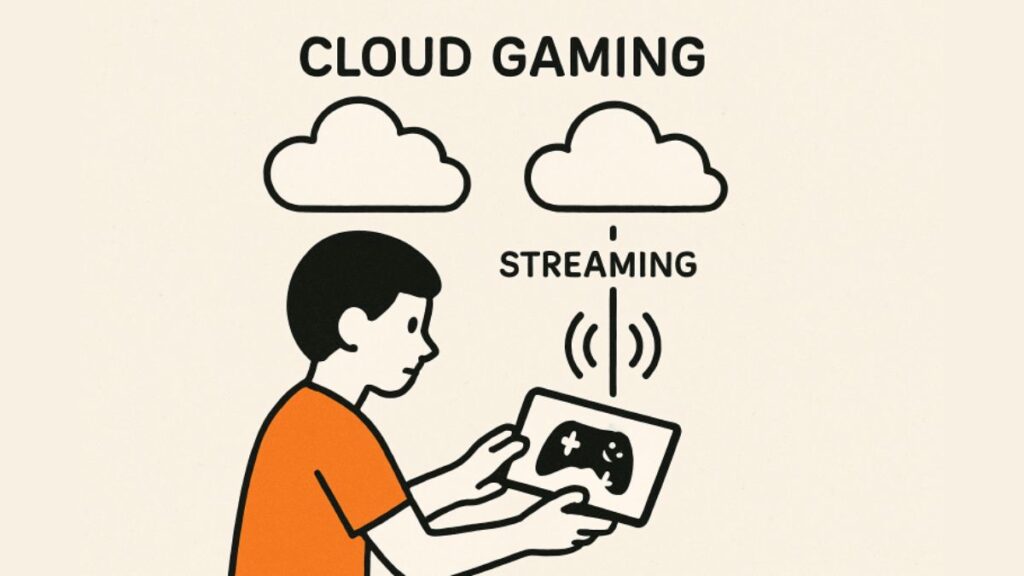Introduction
Cloud gaming is breaking down the traditional barriers to high-quality gameplay, allowing anyone to access cutting-edge gaming experiences without the need for powerful or expensive hardware. As the gaming landscape evolves, innovative approaches like Xsolla’s cloud gaming solutions are shaping the future by providing scalable, easy-to-integrate platforms for both players and developers.
This guide explores the transformative possibilities of cloud gaming, from how it works and its key benefits to the evolving technologies and platforms powering this shift. Whether you’re a dedicated gamer or new to the scene, cloud gaming opens up the future of play to everyone, leveling the playing field and making top-tier games more accessible than ever before.
What Is Cloud Gaming?
Cloud gaming, often referred to as game streaming, is revolutionizing the gaming industry by enabling users to play games hosted on remote servers. Instead of relying on local hardware, all the heavy processing is performed in the cloud, with only the video and audio feed transmitted to the player’s device. This approach means even entry-level laptops, phones, or smart TVs can run visually demanding games smoothly.
The rise of cloud gaming is making the world of video games more democratic and inclusive. People who previously lacked access to powerful consoles or PCs can now participate in AAA-level gaming, enjoying high-fidelity graphics and seamless gameplay experiences from anywhere with an internet connection.
How Does Cloud Gaming Work?
Cloud gaming relies on vast data centers housing high-performance computers. When a player launches a game, their commands (such as button presses or mouse movements) are sent over the internet to these remote servers. The servers process the inputs, render the updated game footage in real time, and stream the result back to the player’s device. This back-and-forth interaction must happen almost instantaneously to provide an enjoyable experience. Any noticeable delay, often called latency, can affect gameplay. Therefore, a reliable and fast internet connection is essential; the quicker and more stable your connection, the smoother your gaming experience will be.
Benefits of Cloud Gaming
- Hardware Independence: Players are no longer tied to pricey gaming consoles or high-end PCs. Instead, cloud gaming lets users stream games on devices they already own, democratizing access.
- Cross-Device Play: Seamlessly pick up and continue games across multiple devices. Start a session on a PC and resume on your phone or smart TV without missing a beat.
- Instant Access: Games can be played immediately after selection, with no waiting for lengthy downloads or installations.
- Cost Efficiency: Subscription offerings provide access to extensive game libraries for a single monthly fee, making gaming both affordable and flexible.
Challenges in Cloud Gaming
- Internet Dependency: A stable and high-speed connection is vital. Those with limited or unreliable connectivity may encounter stutter or dropouts.
- Latency Issues: Even slight delays between user input and in-game reaction can be detrimental, especially in fast-paced or competitive games.
- Data Usage: Game streaming can consume large chunks of data, which may be problematic for users with restrictive bandwidth limits or data caps.
Leading Cloud Gaming Platforms
The competitive nature of cloud gaming has led to significant innovation among major service providers:
- Xbox Cloud Gaming: Offers robust integration with Xbox Game Pass, letting players stream a massive selection of games on phones, tablets, and computers.
- NVIDIA GeForce NOW: Enables access to digital libraries from Steam, Epic Games Store, and more, using high-powered cloud GPUs for premium visuals and performance.
- Amazon Luna: Delivers curated channels of games under a subscription model, optimizing play for both casual and hardcore gamers alike.
These platforms are at the forefront, constantly evolving their infrastructure to improve streaming reliability and game selection. Each service offers unique features tailored to different types of gamers.
Technological Advancements in Cloud Gaming
- 5G Networks: The launch of 5G promises low-latency, high-speed mobile connectivity, ensuring near-instant responsiveness for cloud gaming even on the go. This technological leap drastically reduces common issues such as input lag and stutter.
- Edge Computing: By processing data closer to the user instead of in distant data centers, edge computing can diminish latency and boost the responsiveness of cloud-gaming platforms.
- AI Integration: Artificial intelligence is increasingly being used to optimize streaming quality, compress data, and personalize content. These enhancements ultimately create smoother, more enjoyable experiences, adjusting performance in real time to serve each player’s connection strength and preferences.
Future of Cloud Gaming
The horizon for cloud gaming is bright and rapidly expanding. As broadband penetration and global internet speeds climb, the reach of cloud gaming will extend to millions of new players around the world. Industry leaders are investing in server infrastructure, software optimization, and user interfaces designed specifically for cloud-delivered games. Soon, expect to see more games being developed “cloud-first,” with features and mechanics intentionally crafted for streaming. Collaborations between hardware, software, and network providers are poised to remove the final technical barriers, making sophisticated gaming truly accessible anywhere. Ultimately, as platforms continue their innovative efforts, the dream of effortless, console-quality play on any screen moves closer to reality, offering a more inclusive, flexible future for gamers everywhere.







